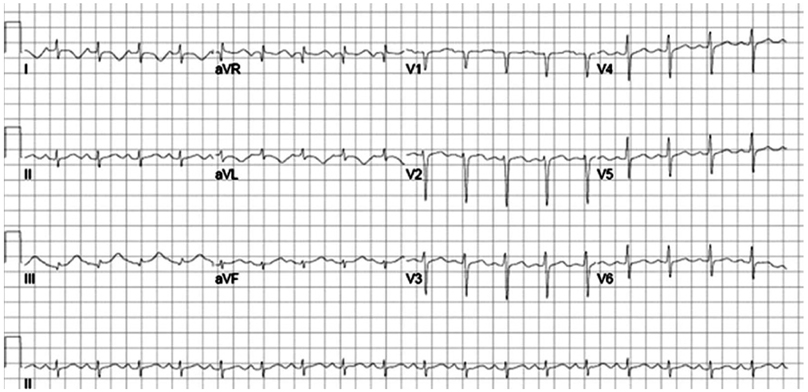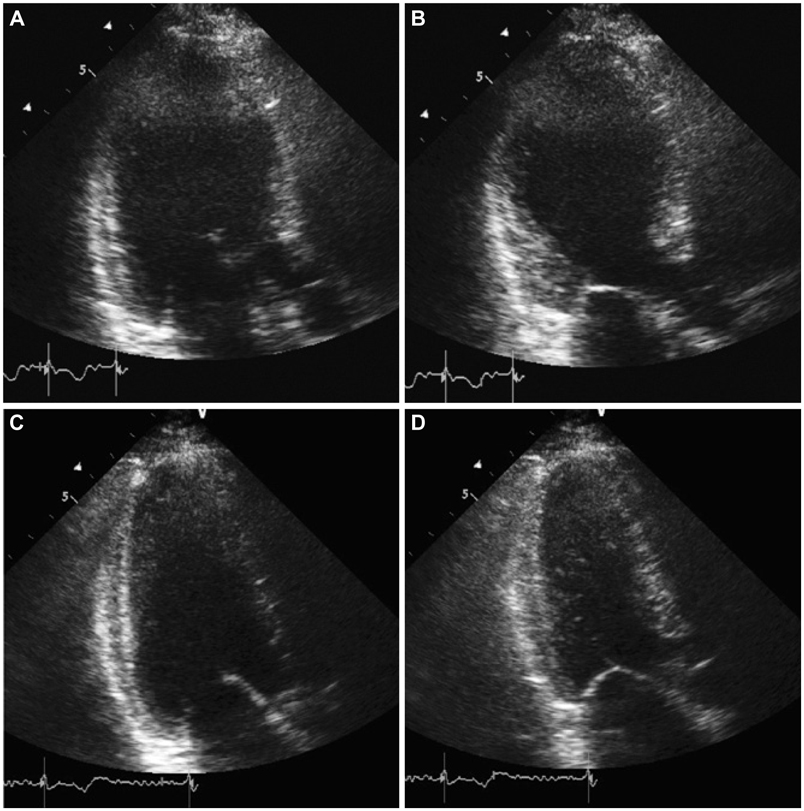Korean Circ J.
2011 Feb;41(2):101-104. 10.4070/kcj.2011.41.2.101.
Takotsubo-Like Severe Left Ventricular Dysfunction After Cesarean Delivery in a 28-Year Old Woman
- Affiliations
-
- 1Cardiology Division, Department of Internal Medicine, Yonsei University College of Medicine, Seoul, Korea. shl1106@yuhs.ac
- KMID: 2225143
- DOI: http://doi.org/10.4070/kcj.2011.41.2.101
Abstract
- Takotsubo cardiomyopathy typically affects post-menopausal women who experience severe psychological or physical stress. It can also develop after medical procedures or surgery. Although the underlying mechanism has not been clearly elucidated, catecholamine overload is one of the most plausible etiologies. Herein we report a case of takotsubo-like left ventricular (LV) dysfunction in a 28-year old woman who underwent Cesarean delivery. She presented with acute heart failure and pulmonary edema immediately after the delivery. Her echocardiography showed severe LV dysfunction and apical ballooning. This case is clinically and pathophysiologically similar to peripartum cardiomyopathy.
MeSH Terms
Figure
Reference
-
1. Kawai S, Kitabatake A, Tomoike H. Guidelines for diagnosis of takotsubo (ampulla) cardiomyopathy. Circ J. 2007. 71:990–992.2. Prasad A, Lerman A, Rihal CS. Apical ballooning syndrome (Tako-Tsubo or stress cardiomyopathy): a mimic of acute myocardial infarction. Am Heart J. 2008. 155:408–417.3. Sharkey SW, Lesser JR, Zenovich AG, et al. Acute and reversible cardiomyopathy provoked by stress in women from the United States. Circulation. 2005. 111:472–479.4. Tsuchihashi K, Ueshima K, Uchida T, et al. Transient left ventricular apical ballooning without coronary artery stenosis: a novel heart syndrome mimicking acute myocardial infarction. Angina Pectoris-Myocardial Infarction Investigations in Japan. J Am Coll Cardiol. 2001. 38:11–18.5. Lee HH, Gwon HC, Kim BJ, et al. Clinical manifestation of novel stress-induced cardiomyopathy mimicking acute myocardial infarction: single center prospective registry. Korean Circ J. 2002. 32:1054–1063.6. Wittstein IS, Thiemann DR, Lima JA, et al. Neurohumoral features of myocardial stunning due to sudden emotional stress. N Engl J Med. 2005. 352:539–548.7. Demakis JG, Rahimtoola SH. Peripartum cardiomyopathy. Circulation. 1971. 44:964–968.8. Crimi E, Baggish A, Leffert L, Pian-Smith M, Januzzi J, Jian Y. Acute reversible stress-induced cardiomyopathy with cesarean delivery under spinal anesthesia. Circulation. 2008. 117:3052–3053.9. Jabaudon M, Bonnin M, Bolandard F, Chanseaume S, Dauphin C, Bazin JE. Takotsubo syndrome during induction of general anesthesia. Anaesthesia. 2007. 62:519–523.10. Littlejohn FC, Syed O, Ornstein E, Connolly ES, Heyer EJ. Takotsubo cardiomyopathy associated with anesthesia: three case reports. Cases J. 2008. 1:227.
- Full Text Links
- Actions
-
Cited
- CITED
-
- Close
- Share
- Similar articles
-
- Coincident Takotsubo Cardiomyopathy and Coronary Artery Disease
- Takotsubo Cardiomyopathy Associated with Severe Hypocalcemia Secondary to Idiopathic Hypoparathyroidism
- Takotsubo Cardiomyopathy Associated with Guillain-Barre Syndrome
- A Case of Malignant Pheochromocytoma Presenting as Inverted Takotsubo-Like Cardiomyopathy
- Takotsubo syndrome and myasthenic crisis after radiocontrast media-induced anaphylaxis: a case report




